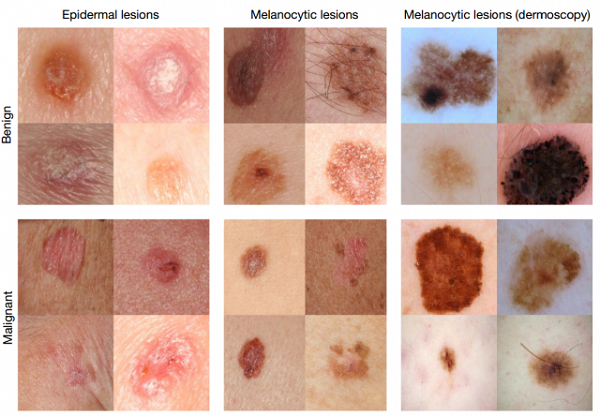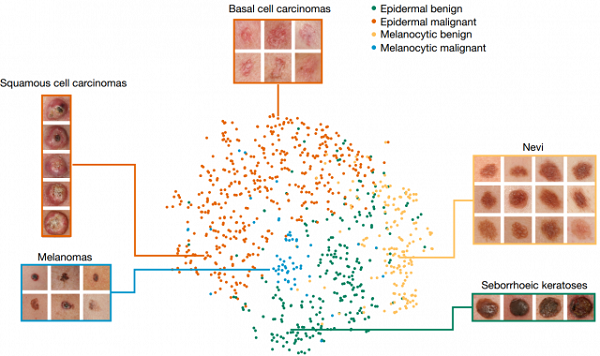Recently, Nature published an article on the cover: Using deep learning algorithms to diagnose skin cancer, the accuracy is 91%, which can be compared with doctors.
I don't know if you still remember how Google Neural Network recognizes cats and dogs? Artificial intelligence is different from human beings. After a child sees a cat several times, he knows what the cat looks like, but for a machine, people need to feed tens of thousands of pictures, after deep learning, they can identify what is Cat.
Similarly, if a person provides a high-quality image of skin cancer to an artificial intelligence system, the system can also identify what is skin cancer through machine learning. Recently, Stanford University published a research related to this in Nature. Comparing the artificial intelligence system with 24 senior dermatologists, the accuracy of the system was found to be around 91%.
The author, Stanford University graduate student Andre Esteva, said: "We have done a very powerful artificial intelligence algorithm that can learn from the data, by writing code, let the system find out what to identify and find. â€
This algorithm, called Convolutional Neural Network, first appeared in Google's brain, and used its amazing computing power to enhance the decision-making ability of the algorithm. After studying at Stanford University, neural networks have been able to identify 1.28 million images from about 1,000 different categories, but researchers need to understand malignant tumors from a benign seborrheic keratosis.
It is harmless to distinguish the dog from a bunch of Persian cats. However, how to distinguish different spots of various skin diseases and identify skin cancer from them is a matter of human life and requires extremely high accuracy.

Colored spots on the skin is a big problem, how to distinguish the algorithm is a problem.
Filter image data
Brett Kuprel, a co-author of the article, said: "Another difficulty with this research is that there was not enough high-quality skin cancer image data to train artificial intelligence algorithms at the time, and we had to solve it ourselves." Even before processing the images. They still have to do some translation work. "We collected some pictures on the Internet, collaborated with the medical school, sorted and tagged the pictures - these labels include German, Arabic, Latin, etc."
Not only the translation but also the processing of the image. Dermatologists often use a device called a dermatoscope to examine the patient carefully. Therefore, medical personnel basically diagnose the disease through medical images with a uniform magnification and perspective. However, the pictures on the Internet vary widely, some use mobile phones, some use instruments, some use cameras, etc., and the environment has different effects, and the angle, focal length and illumination are also different.
Finally, the researchers collected images of about 130,000 skin lesions, including more than 2,000 different diseases. They used these images to create an image library and provide it as raw pixels to the algorithm, each with a label that describes additional data about the disease. The researchers then developed an algorithm that allowed the algorithm to clarify the intrinsic link between the images: the rules that the disease follows in its appearance through tissue transmission.

This is how artificial intelligence divides the different types of skin diseases that it sees.
Nitrogen Generator,Nitrogen Gas Generator,Nitrogen Compressor,N2 Generator
Hangzhou Zhongju air separation equipment manufacturing Co., Ltd , https://www.hzzjkfzz.com